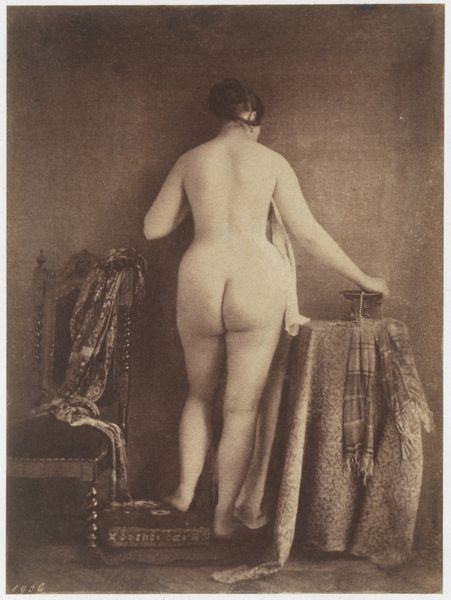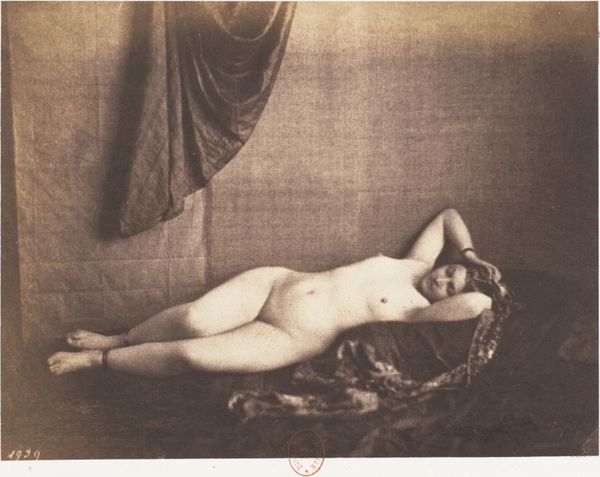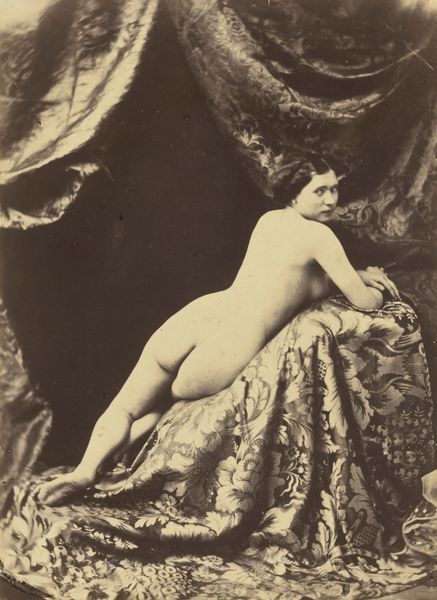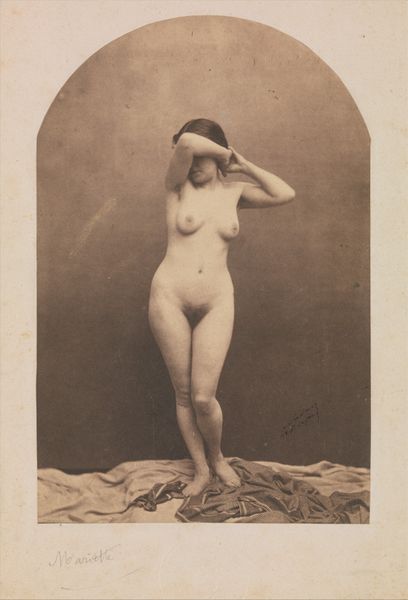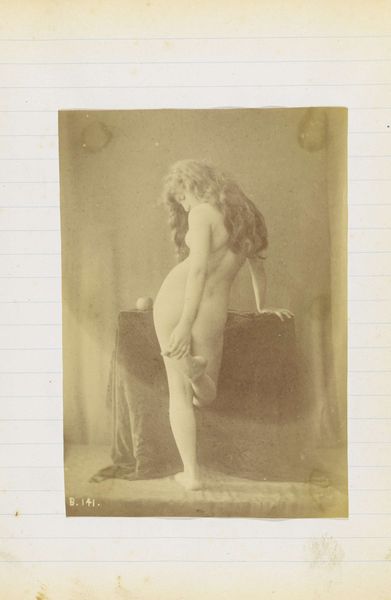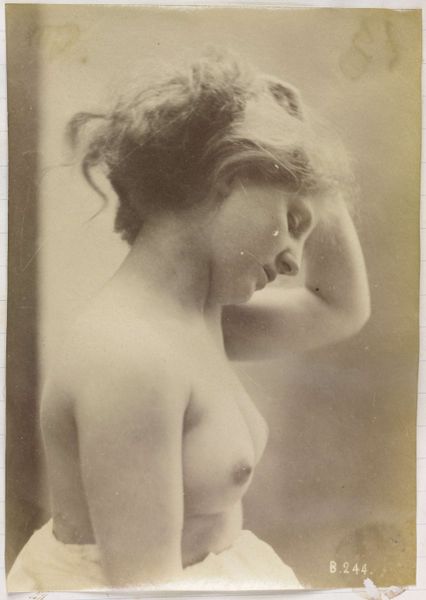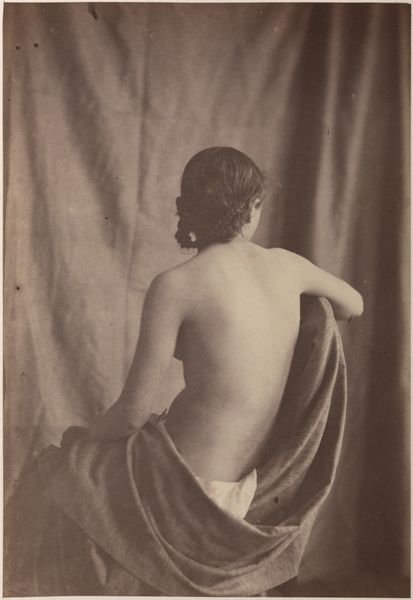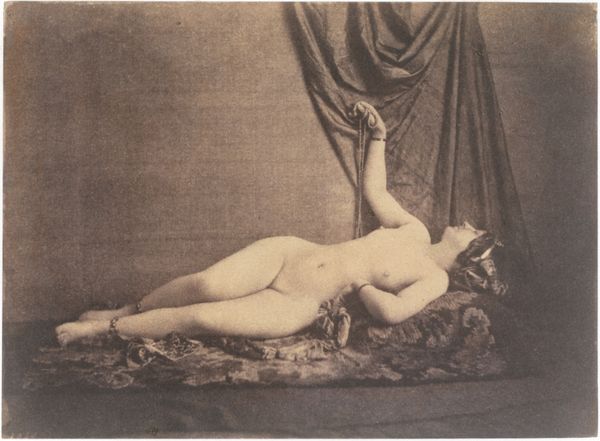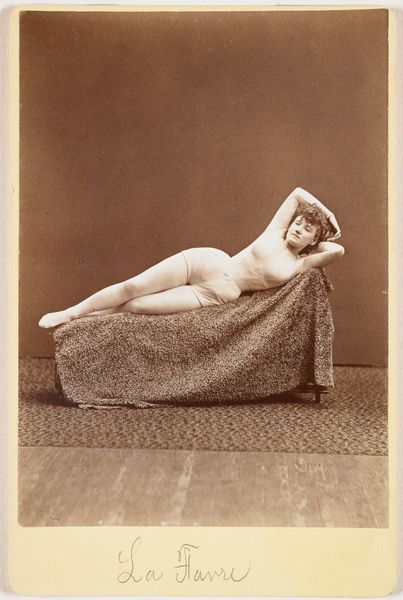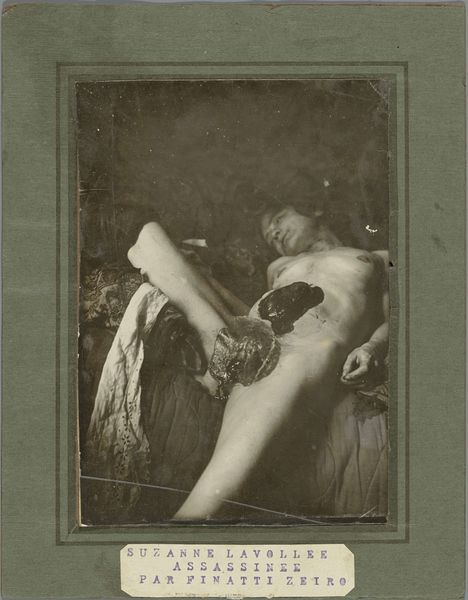
Dimensions: Mount: 16 1/16 in. × 13 1/16 in. (40.8 × 33.2 cm) Image: 8 1/4 × 6 1/2 in. (21 × 16.5 cm); oval
Copyright: Public Domain
Curator: Allow me to introduce Oscar Gustav Rejlander's "Ariadne," created in 1857. It's an albumen print currently housed here at the Metropolitan Museum of Art. Editor: My first thought is loneliness. There's a palpable vulnerability in her pose, turning away, as if from a world she no longer wants to face. And that soft, almost hazy quality... like a memory fading at the edges. Curator: It's fascinating how Rejlander blended the emerging art of photography with classical themes. The title "Ariadne" references the mythological figure abandoned by Theseus, which adds another layer of interpretation. Think about the socio-historical implications of such representation back in 1857, especially concerning the construction of the female body! The darkroom process was surely laborious. Editor: Absolutely, the darkroom labor adds to my reading of isolation. Each print, crafted meticulously, carrying the weight of the sitter's supposed shame. It also speaks to the limited consumption and production possibilities of art back then— the materiality, so scarce and revered. Curator: Speaking of materiality, consider the use of albumen, derived from egg whites, to create the photographic emulsion. Isn't it striking that such delicate imagery emerges from a rather mundane material? I love that connection of body and home. I mean, the curve of the neck is simply gorgeous. Editor: That leads me to wonder: Who was this woman, really? Rejlander has clothed her with symbolism, but, what about her? Do you think this process and the reference to egg whites renders the female model's lived labor—the time spent posing—somehow obsolete? What about its economy, even back then? Curator: That’s a compelling question. There is such a deep sense of intimacy, perhaps a staged intimacy. You almost forget the clinical photographic process as if one were sneaking into a boudoir! It speaks volumes about Rejlander's ability to manipulate the viewer's gaze. That fabric could signify decadence and wealth! Editor: Exactly! Now I’m even more convinced of the constructed drama here. The whole work is caught between supposed ‘natural’ depiction and material and symbolic construction, a contradiction for any reading. Curator: Well, pondering those tensions certainly gives the image added resonance today. Thank you for shedding light on "Ariadne"! Editor: Thank you; my pleasure.
Comments
No comments
Be the first to comment and join the conversation on the ultimate creative platform.
